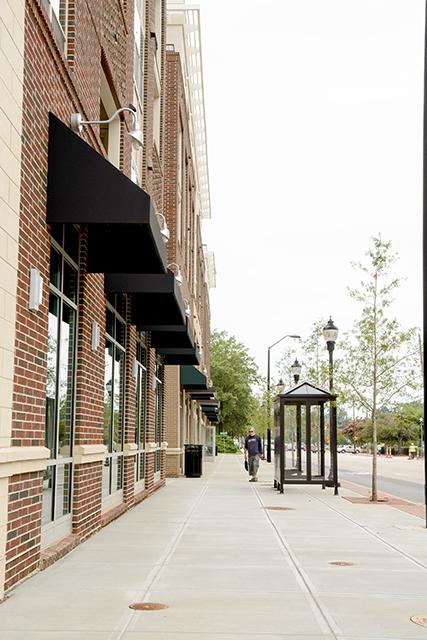Proposed construction plans for Oberlin Road near Cameron Village will make the busy street more accommodating to pedestrians, while maintaining road size to increase traffic efficiency.
The proposal is part of a larger plan to improve the area around Cameron Village. Three new apartment complexes are currently being developed in the area, which are expected to increase congestion and traffic flow.
The proposal aims to give Oberlin Road more of a main-street feel, and is an alternative to a previously suggested road diet plan of cutting five lanes into two on the busy road.
The road diet plan would likely increase traffic congestion, especially because the number of residents and business owners are expected to increase dramatically with the development of the Crescent Resources’ apartments, as well as two other complexes, in the area. The road diet plan was scrapped after a recent traffic study conducted by Raleigh traffic engineers revealed narrowing the road to two lanes would likely cause major backup issues.
John Pharr, senior vice president and senior market officer for Regency Centers, the developer for Cameron Village, said his initial opinion of the road diet plan was not favorable.
“To radically reduce the traffic lines from five to two lanes would have created chaos to both consumers and suppliers,” Pharr said. “Currently over $180 million worth of consumer goods is transacted in the Village on an annual basis, and it needs to adequately flow.”
Researchers plan on conducting another traffic study after the three new apartment developments are built to accurately gauge the effects they will have on the traffic and pedestrian flow on Oberlin Road. The road diet plan is still a possibility in the future, depending on the results of later studies as well as public opinion.
A public workshop was held on April 23, 2013 to determine community interests and concerns over the new project. At the meeting, more than 85 participants determined the current street design is not supportive of walking, biking or public transit. There is limited visibility, which poses a hazard for pedestrians trying to cross the road, as well as incomplete sidewalks going north of Everett Avenue.
The current proposal aims to finish these incomplete sidewalks, as well as widening them to better accommodate the pedestrians and businesses that line Oberlin Road. It also includes installing highly visible crosswalks and other pedestrian traffic signals to increase safety and efficiency in the area.
“Business owners have responded positively to these changes,” Pharr said. “They were not in favor at all of the initial proposed road diets.”
Instead of creating bike lanes, which will cut down on existing traffic lanes, engineers plan to create sharrows, or shared lane markings, to give cyclists a safe space to travel in the pre-existing lanes.
In addition, power and utility lines may be buried on the West side of Oberlin Road, so there will be no overhead wires on this side of the street. However, this is contingent upon an expected level of high electrical demand in adjacent properties.
The east side of Oberlin will continue to have overhead wires, but the distance between the street and the wires will be increased to reduce clutter on that side of the street.
The proposal also includes a street-scaping plan that will give Oberlin more of a main-street look, with new bike racks, vintage street lamps and street trees to serve as a buffer against the busy road’s traffic.
“The apartment residents are overwhelmingly in favor,” Pharr said. “They want to live and walk to their stores from their residences, so anything that improves the streetscape is very much in their favor.”
The Street Division of Public Works estimates that this section of Oberlin Road will be resurfaced around 2020. The plan can be viewed in full at raleighnc.gov.








